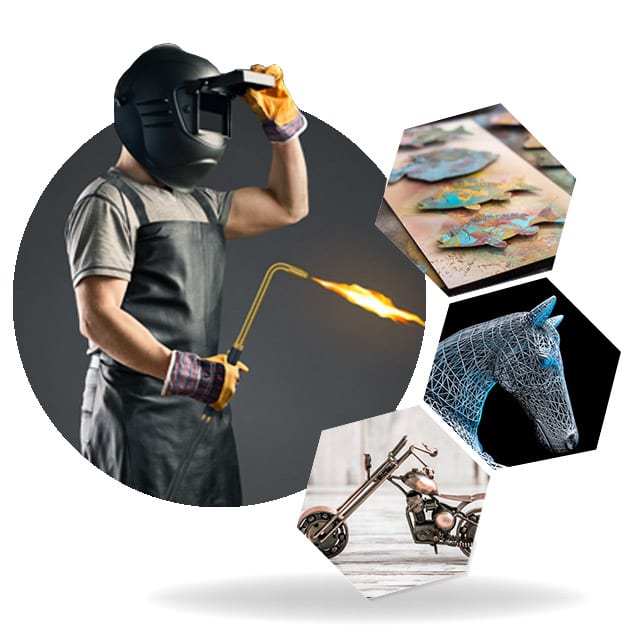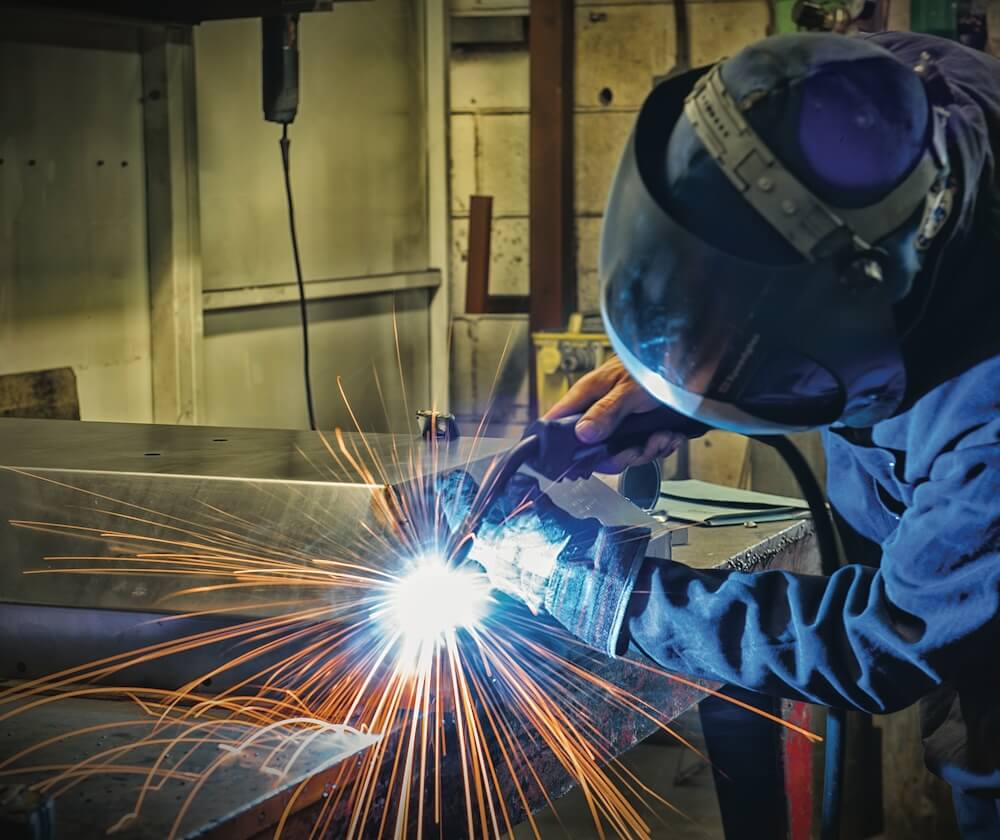How to prevent distortion in Montana Mobile Welding and Repair Welding projects
Common Welding Repair Work Issues and How to Address Them Effectively
Welding fixings frequently encounter a variety of issues that can endanger the honesty of the end product. Typical issues include insufficient infiltration, porosity, and misalignment, amongst others. Each flaw presents unique obstacles that require details approaches for resolution. Comprehending these problems is crucial for welders aiming to boost their abilities and end results. This conversation will certainly discover these typical welding repair concerns and reliable approaches to address them.
Poor Penetration
Insufficient infiltration occurs when the weld metal falls short to totally fuse with the base material, causing weak joints and possible architectural failures. This problem frequently comes from inadequate warm input, wrong electrode angle, or inappropriate welding speed. Welders might experience poor penetration as a result of a mistake of the essential specifications for a particular product density or type. Furthermore, contamination on the base product's surface area can impede effective bonding, worsening the issue. To attend to poor infiltration, welders need to assure ideal setups on their equipment and maintain a clean job surface. Regular assessment of welds is suggested to recognize any kind of shortages early, enabling timely adjustments and the avoidance of endangered architectural integrity in bonded settings up.
Porosity
Porosity is an usual defect in bonded joints that manifests as small gas bubbles caught within the weld steel. This defect can endanger the stability of the weld, leading to reduced strength and prospective failing under stress and anxiety. Fabrication. Porosity generally emerges from contamination, dampness, or incorrect welding techniques, which enable gases to leave right into the molten weld swimming pool. To deal with porosity, welders should ensure appropriate surface area preparation, maintain a clean functioning atmosphere, and make use of ideal welding criteria. Additionally, selecting the appropriate filler material and protecting gas can alleviate gas entrapment. Routine inspection and screening of welds can help determine porosity early, assuring timely restorative actions are taken, consequently maintaining the high quality and dependability of the bonded structure
Imbalance
Imbalance in welding can emerge from different factors, consisting of improper arrangement and thermal growth. Recognizing the source is important for effective resolution. A number of correction strategies are offered to realign components and guarantee architectural integrity.
Root causes of Imbalance
Welding misalignment often originates from a variety of underlying issues that can jeopardize structural stability. One main reason is improper fit-up of elements before welding, which can cause voids and unequal surfaces. Variants in thermal expansion throughout the welding procedure can also result in distortion, specifically if the products being signed up with have different coefficients of growth. Furthermore, poor fixturing and clamping may fall short to hold parts securely in area, causing movement throughout welding. Badly maintained devices, consisting of welding devices and tools, may introduce inconsistencies in the weld grain, more adding to misalignment. Driver error, stemming from not enough training or experience, can also play a considerable role in producing misaligned welds.

Adjustment Strategies Readily Available
Dealing with misalignment effectively requires a mix of restorative methods customized to the certain issues handy. One common approach is using fixtures or jigs to hold elements in the right position throughout welding, guaranteeing consistent placement. Additionally, pre-heating the materials can help in reducing distortion and improve fit-up. For significant misalignment, mechanical realignment methods, such as using hydraulic jacks or clamps, can be employed to deal with the position prior to welding. Post-weld heat treatment may likewise be required to alleviate anxieties created by imbalance. Lastly, careful examination and change throughout the setup phase can protect against misalignment problems from coming to be substantial issues, advertising a smoother welding procedure and improving total structural honesty.
Distortion
Distortion is a typical challenge in welding that can occur from different variables, including unequal cooling and heating. Comprehending the sources of distortion is crucial for executing effective prevention strategies. Resolving this concern not just enhances architectural honesty yet additionally enhances the general high quality of the weld.
Sources of Distortion
When based on the intense warmth of welding, materials typically go through modifications that can lead to distortion. This phenomenon largely arises from thermal expansion and tightening during the welding process. As the weld area warms up, the product expands; upon cooling, it contracts, which can develop interior tensions. In enhancement, uneven home heating across a workpiece can worsen these anxieties, leading to bending or flexing. The kind of material website additionally plays a considerable function; steels with varying thermal conductivity and coefficients of growth may react differently, causing uncertain distortions. Inadequate joint design and inadequate fixturing can contribute to imbalance throughout welding, enhancing the possibility of distortion. Comprehending these causes is necessary for reliable welding fixing and prevention approaches.
Prevention Techniques
Efficient prevention strategies for distortion throughout welding concentrate on regulating warmth input and ensuring correct joint design. Keeping a consistent warm input helps to decrease thermal development and contraction, which can bring about distortion. Making use of methods such as pre-heating the workpiece can likewise minimize the temperature level gradient, advertising consistent heating. Furthermore, choosing ideal joint designs, such as T-joints or lap joints, can improve stability and reduce tension focus. Carrying out appropriate fixturing to secure the work surfaces in position better aids in preserving positioning throughout the welding procedure. Finally, staggered welding sequences can distribute warm more evenly, avoiding local distortion. By applying these approaches, welders can considerably reduce the chance of distortion and enhance the overall top quality of their welds.
Cracking
Cracking is a common issue come across in welding fixings, usually arising from different factors such as inappropriate cooling prices, product selection, or insufficient joint prep work. The occurrence of cracks can greatly endanger the integrity of the weld, causing potential failures during operation. To address this concern, welders must first analyze the source, guaranteeing that products are suitable and properly picked for the certain application. In addition, controlling the air conditioning rate during the welding procedure is necessary; rapid cooling can induce tension and result in fracturing. Proper joint design and preparation also contribute to reducing the risk. Applying these approaches can improve weld high quality and durability, ultimately reducing the chance of splitting in ended up weldments.

Insufficient Combination
A considerable issue in welding repair work is incomplete combination, which happens when the weld metal does not properly bond with the base material or previous weld passes - Montana Mobile Welding and Repair Belgrade Welding. This issue can cause weaknesses in the joint, possibly compromising the stability of the bonded structure. Factors adding to insufficient fusion include inadequate heat input, inappropriate welding method, and contamination of the surface areas being joined. To address this problem properly, welders must guarantee proper pre-weld cleansing and surface prep work, along with readjust their welding specifications to attain ample infiltration and blend. Routine assessment throughout the welding process can likewise aid determine incomplete combination early, permitting for timely rehabilitative measures to improve the total high quality of the weld
Overheating
While welding fixings can enhance structural honesty, overheating provides a substantial difficulty that can bring about product deterioration. Too much warmth during welding can alter the mechanical properties of metals, causing reduced stamina, boosted brittleness, and bending. This phenomenon is specifically critical in high-stress applications where structural reliability is extremely important. Recognizing overheating can include visual evaluations for staining or distortion, as well as keeping track of temperature during the welding procedure. To reduce the risks related to overheating, welders must use suitable strategies, such as regulating warmth input, readjusting traveling speed, and utilizing appropriate filler materials. Additionally, implementing pre- and post-weld heat therapies can assist recover material homes and enhance the total quality of the repair, making certain long-term efficiency and safety and security.
Regularly Asked Inquiries
What Are the Common Indications of a Welding Problem?

How Can I Evaluate My Welds for Quality?
To evaluate welds for top quality, one can make use of aesthetic evaluations, ultrasonic testing, and radiographic techniques. Each technique assures architectural stability, determines issues, and verifies adherence to specified requirements, ultimately boosting the reliability of the bonded joints.
What Safety Safety Measures Should I Take While Welding?
When welding, one must prioritize safety by using ideal personal protective equipment, ensuring proper air flow, protecting combustible materials away, preserving a clean workspace, and being conscious of environments to protect against crashes and injuries.
Can I Fix a Weld Without Redesigning the Entire Joint?
Fixing a weld without redoing the whole joint is possible, depending on the damages (Belgrade Fabrication). Techniques such as grinding, including filler product, or using a welding procedure can efficiently address particular flaws while protecting the surrounding structure
What Equipment Are Essential for Reliable Welding Services?
Vital tools for reliable welding repair work include a welding device, cord brush, mill, safety gear, clamps, and filler products. Each device plays an important duty in making certain top quality and safety and security during the repair process. Porosity typically emerges from contamination, moisture, or improper welding strategies, which permit gases to get away right into the liquified weld swimming pool. Improperly maintained tools, including welding machines and tools, may introduce inconsistencies in the weld grain, more adding to imbalance. When subjected to the intense warmth of welding, materials often go through modifications that can lead to distortion. Cracking is a common problem come across in welding repair work, usually resulting from different aspects such as improper cooling rates, material selection, or poor joint preparation. A significant concern in welding fixings is insufficient fusion, which takes place when the weld steel does not adequately bond with the base material or previous weld passes.